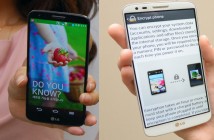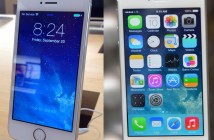
October 4th was eagerly awaited by millions of people worldwide, who had at least some connection to Apple and their products, whether they were employees, journalists or fans. It was supposed to be the day the next generation iPhone is here, but sadly that did not happen. Instead, today we got news of the iPhone 4S, an upgrade to the existing iPhone 4 – not the Galaxy S2 and Sensation killer we’ve kind of been expecting.
But the iPhone 4S isn’t that bad either – on its own, discounting that it’s the next iPhone model, it’s a pretty damn good phone, a perfect iPhone 4 you could say, and it’s actually a lot like the iPhone 3GS was to the 3G. The exterior remains the same: a metal frame sandwiched between two glass panels, with a 3.5 inch display plus the home button on the front (960×640 resolution) and the camera on the back. The antenna has been improved as well, being replaced by a dual array that should get rid of any reception problems for good (it’s been the most widely reported problem of the iPhone 4).
As far as other hardware improvements go, well the iPhone 4S should be much faster than the previous model in just about everything, thanks to the new Apple-owned A5 dual core processor, the same one used in the iPad 2, which also has a new and improved graphics adapter that should provide up to 7 times the performance in games and other intensive graphics apps compared to the A4 – finally the iPhone is on the same playing field as all the other dual core Android phones that have been relentlessly hitting the market almost every month in the past year.
The other big thing that is overhyped by Apple is the camera – you now have an 8 megapixels shooter with support for full HD 1080p video recording and an integrated image stabilization system for both photos and videos, meant to eliminate mostly handshake. That’s a pretty good addition, although the quality isn’t that much different than what you get on the iPhone 4.
There are a few improvements in the software as well, although the iPhone 4 will get most of that, as well, with the upcoming iOS 5 upgrade. There is support for the iCloud, using which you can upload your photos, videos, music and anything else you want to a remote storage space, seamlessly (i.e. you take a photo and it’s immediately uploaded if you have a data connection, or delayed until you enable it). And then there’s something the previous iPhone owners will not only not get, but also lose: Siri, a voice dictation and control app that has been purchased by Apple, is now tightly integrated with iOS, and will only be available on the iPhone 4S – the standalone app will stop working on October 15th. Dirty games by Apple, indeed.
Siri works quite well, and it can do a lot of things, even more than Google’s Voice Control can. You can dictate messages, place calls, search for anything online, create/edit reminders, and do almost anything else with your voice (and most of the times, eyes on the screen). I don’t know whether it’s a good reason for upgrading, but I do like the features.
Overall, the improvements over the iPhone 4 are pretty negligible – most people won’t see the dual core performance in action, and using Siri in any kind of noisy environment will most probably be out of question (plus nobody’s used to that, yet). Apple is just milking everything they can out of the current production before releasing the true next generation iPhone, which will undoubtedly have LTE support and other unique features that will make it a leader on the smartphones market once again. Still, if you’re just buying a new iPhone or your current contract is up and you’re looking for another, the iPhone 4S is the best choice at the moment.
image source: Apple.com



